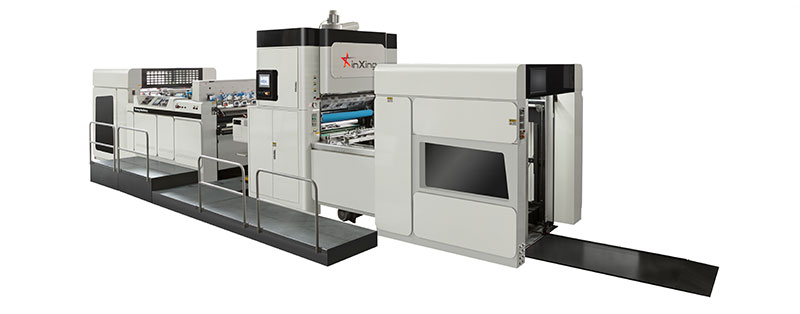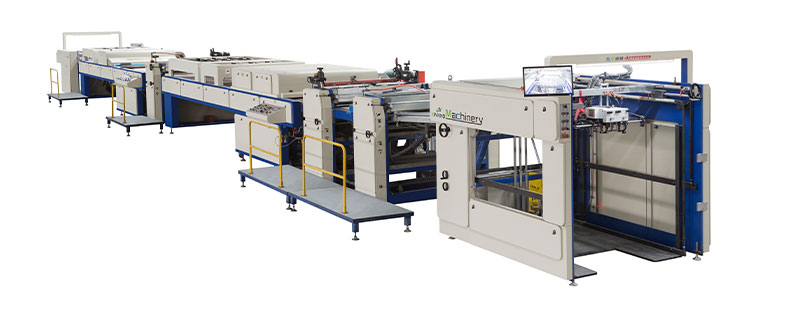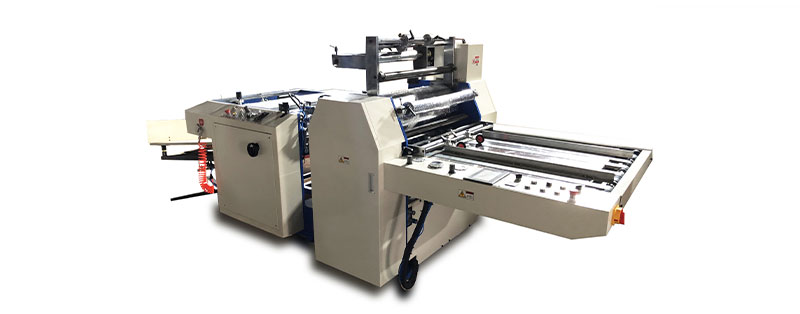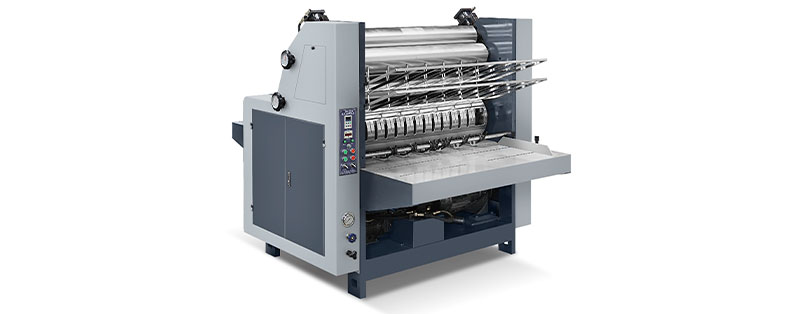Roll Laminating Machine is a device that continuously laminates rolled substrates (such as paper, film, label materials, etc.) through rollers (roller shafts). It is used to attach a protective film (such as PET, OPP, PVC, etc.) to the surface of the material to improve water resistance, wear resistance, glossiness or anti-counterfeiting performance.
Key Components
• Unwinding device: fix the substrate roll and film roll;
• Gluing system (wet/dry): control the thickness and uniformity of the glue layer;
• Heating/pressure roller: provide the temperature and pressure required for bonding;
• Rewinding device: roll the laminated material into a finished product.
By adjusting parameters such as roller speed, temperature, glue amount, etc., it can adapt to substrates and films of different thicknesses and materials to achieve efficient and stable mass production.
Core features of Roll laminating machine
Roll material processing: supports continuous feeding of rolled materials (such as webs, printed materials, packaging films), suitable for large-scale industrial production.
Process type:
• Dry lamination: first apply glue to the substrate, then heat-press and bond with the film after drying (usually using high-temperature rollers).
• Wet lamination: directly apply glue and then cold-press and bond with the film (no heating required, suitable for temperature-sensitive materials).
• Hot lamination: melt the film glue layer through a heated roller and bond quickly (high efficiency and strong adhesion).
Function:
• Protect printed content (anti-scratch, waterproof, anti-ultraviolet);
• Improve surface texture (matte/gloss effect);
• Enhance material strength (such as folding resistance of packaging materials).
Types of roll laminating machines
According to the material feeding form of the roll laminating machine, the core types can be divided into roll-to-roll laminating machines and roll-to-sheet laminating machines. Both of them take "roll materials" as the main processing object, and the difference lies in whether the discharge end continues to maintain the roll form or is cut into sheets.
1. Roll-to-roll laminating machine
Both the feed end and the discharge end are roll materials (substrate roll + film roll), which are continuously transported by rollers to achieve full-process automated continuous lamination.
• Substrate: roll paper, printed label roll, packaging film roll, etc. (such as PET roll for mineral water label).
• Film: rolls of protective films such as PET, OPP, PVC, etc. (usually the same width as the substrate).
• Workflow:
Substrate roll → unwinding device → gluing/heating (depending on the process) → hot pressing and laminating with film roll → winding device (finished roll).
Core features:
Efficient batch production: suitable for large-scale continuous processing (60-100 meters of roll can be processed per minute), commonly used in label, packaging film, advertising inkjet cloth lamination.
Process adaptation: supports multiple processes such as dry, wet, and hot lamination, and can integrate post-processing such as slitting and rewinding.
2. Roll-to-sheet laminating machine
The feed end is a roll (one of the film or substrate is in roll form), and the discharge end is a single sheet. The continuously laminated roll is slit into single sheets through the cutting device.
• Workflow:
Roll → Unwind → Manual/Automatic Loading → Laminating → Cutting Die → Single Finished Product.
• Core Features:
Semi-continuous production: Taking into account the efficiency of rolls and the flexibility of sheets, it is suitable for small and medium batches and multi-specification sheet laminating (such as single leaflets, certificates, and photo laminating).
• Equipment scale: Usually smaller than roll-to-roll models, it supports manual loading (suitable for small printing plants) or semi-automatic connection.
• Application scenarios: Graphic printing shops (single document laminating), packaging proofing (small batch color box laminating), personalized labels (single customized labels).
Tag: #Roll Laminating Machine #Roll to Roll Laminating Machine





